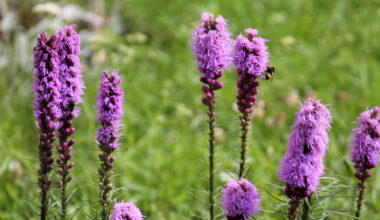The bell pepper is as beautiful as it is good! It announces the summer, the sun and the good small dishes of the south. It comes in many colors: red, green, yellow, orange, etc. Its mild and slightly sweet taste brings an exceptional flavor to dishes.
In addition, it is possible to grow your own peppers! Less difficult than it seems, the only requirement for peppers is the sun. However, there are tricks to growing them in more northern regions. Today, we’ll guide you through growing peppers step by step.
Contents
How many peppers can you plant per pot?
Generally, you can plant up to 3 or even 4 bell pepper plants per pot. Of course, this depends on the variety and the size of the pot, so plan on pots that are at least 25 inches tall in any case.
How many peppers does each plant produce?
You can expect to produce between 12 and 15 peppers per plant. It is possible that your plant will produce more, but it is far more beneficial, in most cases, to remove peppers beyond 15. This way, you’ll still have quality vegetables, and you won’t lose taste!
Growing peppers
Peppers are harvested one month after planting in pots and five to six months after sowing, from July to October. The first peppers are green and can be picked when they stop growing. If you wait a little longer, they will turn color.
Red, orange and yellow peppers are harvested when their skin is shiny and the color is bright. The most important thing is to harvest the last peppers before the first frost. To do this, cut the stem cleanly with secateurs. Peppers can be stored for a few days in the refrigerator.
In which soil and under which exposure to the sun should I grow peppers?
Peppers like deep soil, richly amended with compost the previous fall.
A sunny vegetable, the bell pepper appreciates a warm and bright place.
When and how to grow peppers?
Sow the seeds of peppers indoors, or in a mini-greenhouse, from February to April. Transplant to the garden in May, when the risk of frost is no longer a concern. Space the plants 20 – 24 inches apart. In the South, sowing in a greenhouse as early as February is possible.
Not very much cultivated in gardens, the bell pepper is nevertheless a vegetable plant that grows very well in the South as well as in the North, provided that greenhouses, large or tunnels are used. It is a perennial, often grown as an annual. Sow peppers at the very beginning of the season (January, February or March) and transplant them to the garden when the risk of frost is over. Or get young plants in pots.
Peppers like warm soils, sunny locations and shelter from the wind. A greedy plant, the bell pepper requires a good supply of compost at planting. Regular watering is important throughout its growth, it does not require any pruning or other maintenance.
Count on a good dozen bell pepper plants to feed the whole family.
Bell pepper conservation
Peppers can be kept for about a week in the vegetable bin of your refrigerator.
It is easy to freeze: you can remove the skin, which is not very digestible, then cut it into strips before placing it in a freezer bag.
To consume this summer vegetable-fruit all year round, you can preserve peppers in oil, or in garlic and olive oil, without forgetting to peel the skin. You can add cumin seeds or herbs de provence to flavour them.
To know about the bell pepper
Originally from tropical America, peppers or chili peppers are characteristic of summer fruits and can be eaten both raw and cooked, in ratatouille for example.
The only difference between peppers and chillies is that they are of different varieties. One is strong and pungent while the other is mild.
But chillies and peppers are grown in exactly the same way.









